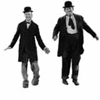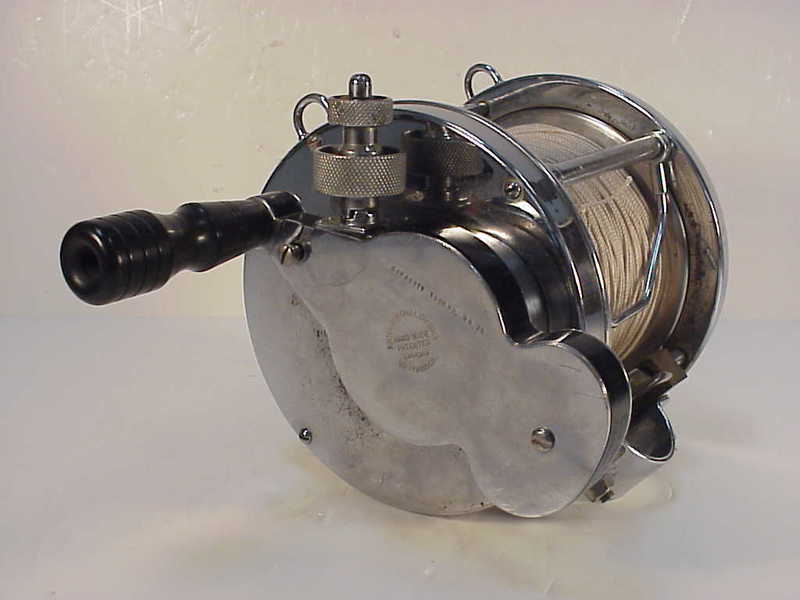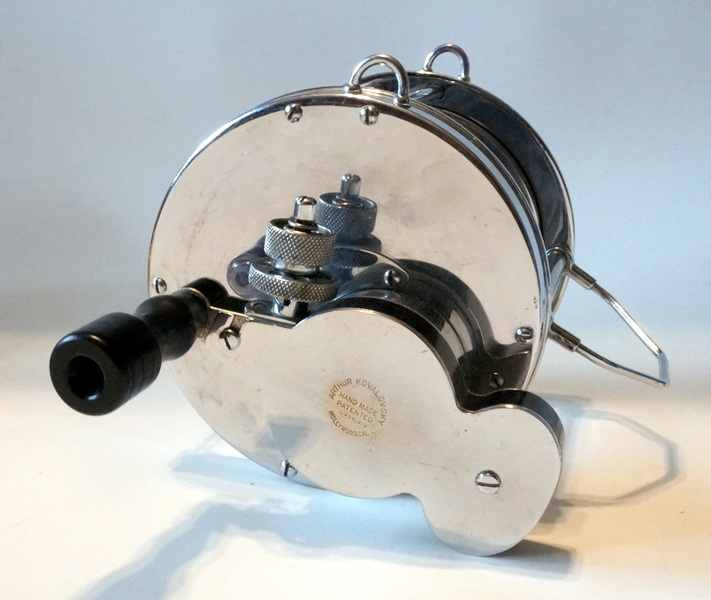ABOUT THE MAN -
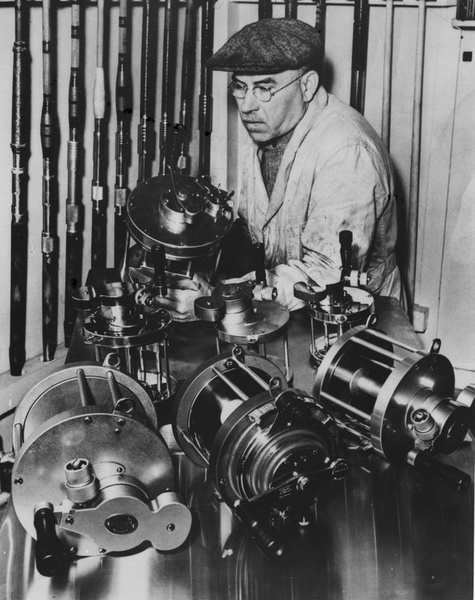
Arthur Kovalovsky was born in 1881 in White Church Hungry where he trained as a metal-smith as a young teen. At the age of 22, Kovalovsky boarded the SS La Touraine departing from Le Havre France on December 26, 1903, and arrived at Ellis Island in early 1904. Kovalovsky moved to St. Louis where he worked in a shop on street-cars and later automobiles and motorcycles. When the owner of the shop was struck and killed by a hey cart Kovalovsky had to seek new employment. A quick study, Kovalovsky designed and built a five-cylinder rotary engine for which he received a patent.
Kovalovsky was also keen on aviation and while in St. Louis he met up with an old friend from France, an avaitor named Louis Bleriot who had flown the English Channel and was performing as a barnstormer throughout the mid-west. With Bleriot encouragement, Kovalovsky set about designing and building his own airplane. First, he built the engine and then the frame while his wife, Anna, sewed canvas for four months to cover the wings and fuselage.
On the day the engine was to be installed into his airplane, Kovalovsky left his shop and headed to the hangar where the airplane's frame was waiting. While passing under DC electrified street-car wires the magneto was demagnetized and the engine would not start and had to be rewound. The delay was an untimely one and by the time the engine had been repaired someone had stolen the body of the plane. A few years later Kovalovsky was informed that the plane had been found in Australia. Somewhere along the plane's route to Australia it had acquired a new engine and it was reported that Harry Houdini had flown in the plane.
In 1918 Kovalovsky moved to Los Angeles California and opened an automobile repair shop in neighboring Hollywood. Kovalovsky was an avid hunter and fisherman and in July of 1927 landed a 400-pound black sea bass off the Port Hueneme Wharf. Being both a fisherman and an inventor it seems only natural that he would build a fishing reel of his own design and, in 1928, that is exactly what he did. Over the next three years, Kovalovsky continued to repair automobiles but his reputation as a reel maker was beginning to gain momentum so in 1931 he decided to go strictly into the reel making business. It was the height of the great depression but the rich still had money and Kovalovsky was making the best reels money could buy so his business thrived. Kovalovsky's reels had the best drag in the business and his attention to detail and style insured there would always be a waiting list to acquire one of his reels. His son, Oscar, joined him in the shop and the output of reels and rods increased.
Zane Grey was one of his best customers and when Kovalovsky came up with his new lever drag reel Grey agreed to endorse it. The reel was Kovalovsky's top of the line reel and was marked and sold as the Kovalovsky "Zane Grey" reel. Ever the tinkerer and inventor, Kovalovsky constantly improved on his own designs and over the years made several different models and many one of a kind reels.
Because of restrictions placed on materials during World War II Kovalovsky had to stop building reels, however, he resumed production again when the war was over. In 1958 at the age of 77, he suffered a heart attack and passed away shortly thereafter. Arguably the finest big game reels ever made, today Kovalovsky's reels are highly sought after by collectors.
ABOUT THE REEL -

This Display deals with the early Type I Standard Model reels with the guitar shaped drag housings. Arthur Kovalovsky built his first big game fishing reel in 1928 which was later dubbed the Type I Standard Model reel. Kovalovsky applied for a patent for this reel in November of 1931 and it was granted in May of 1934. The early reels had one drag adjuster which took the drag from free-spool all the way through full drag. The guitar shaped drag housing had a fixed cover that was held to the drag housing with either three or four screws. The very earliest of these reels was fitted with a round name tag like the example below -
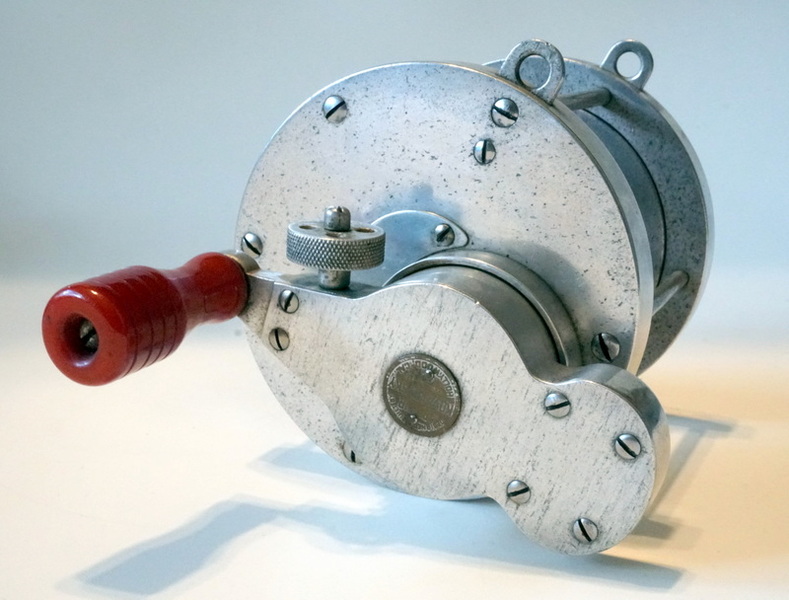
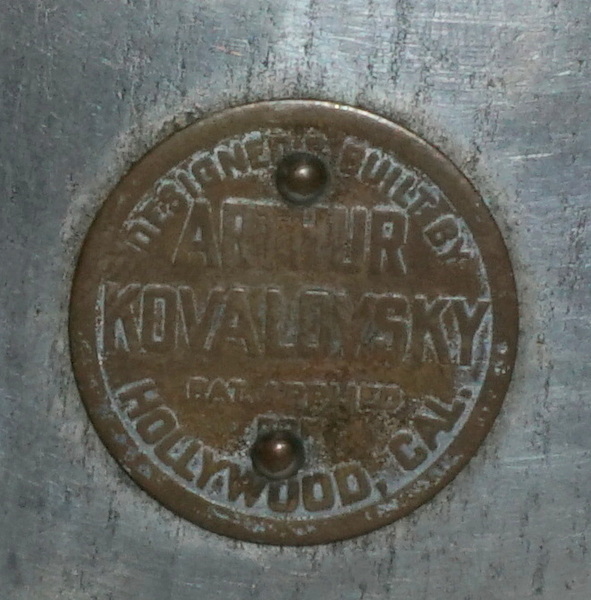
The next iteration of the Type I reel had an second knob added to the drag stack, this knob strictly operated the free-spool mechanism and when turned, immediately put the reel in free-spool or engaged the drag. The round reel tag was replaced with an oval shaped tag that stated Patent Applied For. The drag housings were still fixed in place with either 3 or 4 screws. According to Arthur Kovalovsky's son, Oscar, the massive 18/0 example pictured below was the first reel his father built that was larger than a 10/0 size reel. The reel was built for Francis Low who is pictured, below, with his wife and the reel while fishing for giant tuna in Nova Scotia. Notice the early click lever on the rear side-plate, the vast majority of Kovalovsky's reels had round sliding click buttons -


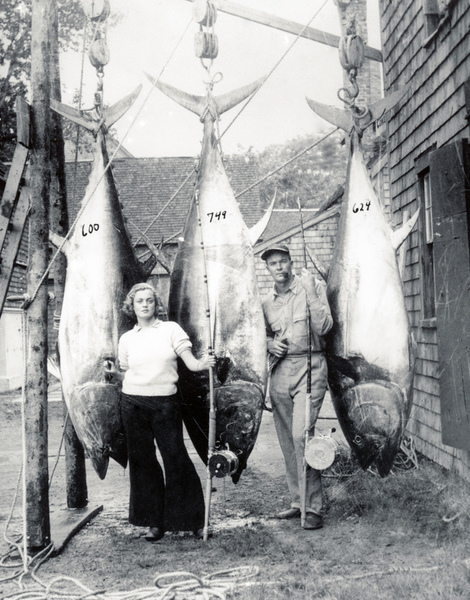
Here are a fine pair of early oval tag Duraluminum reels with a gold Alumilite finish. The Alumilite finish was an early version of anodizing that Kovalovsky used on his Duraluminum reels. The gold reels are perhaps the most sought after version of the Type I reel. The smaller reel has an oil port on the front with the tag affixed to the rear side-plate. Both reels still have the fixed drag housing with two and four screws in their counterbalances -
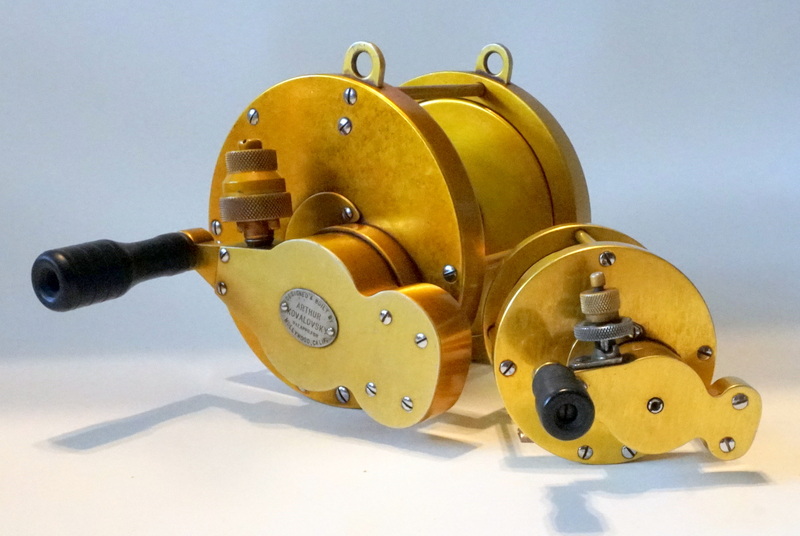

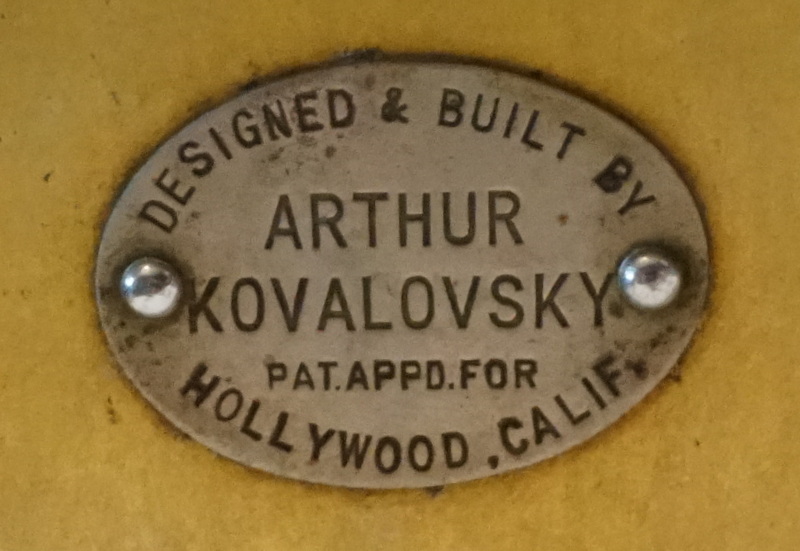
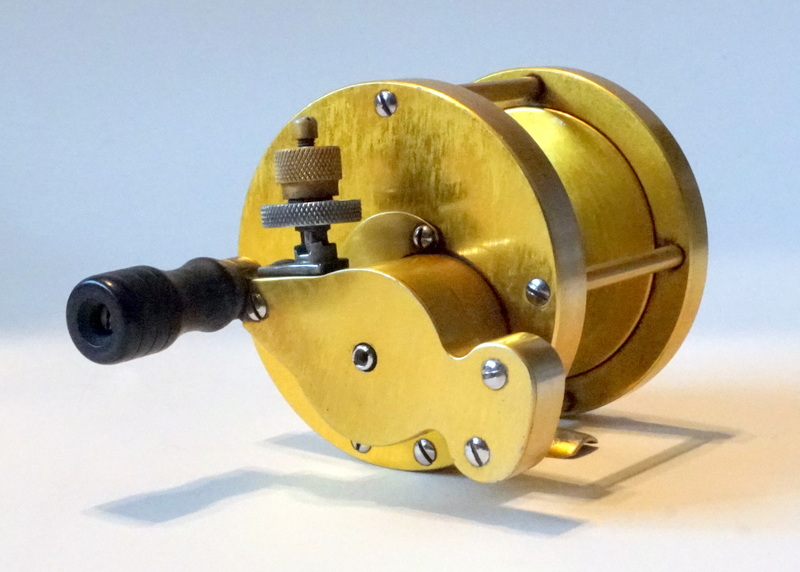
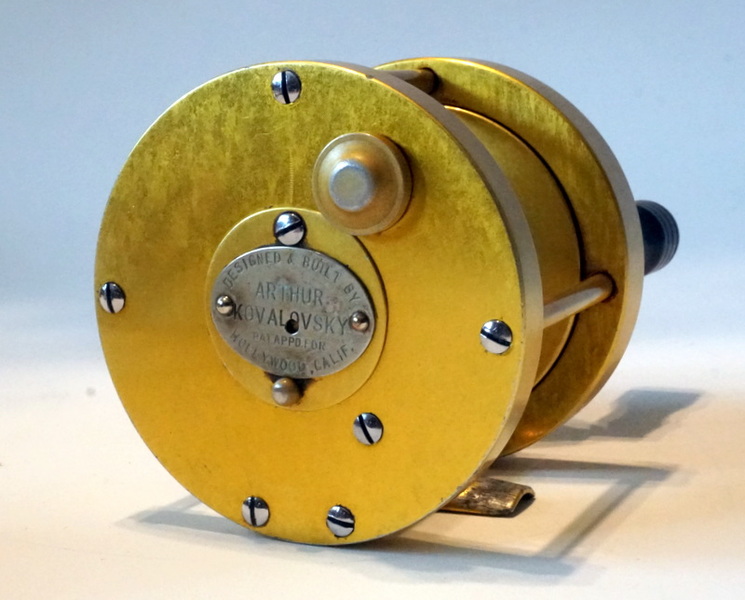
Shown in the four pictures below are four Duraluminum gold anodized Type I Standard Model reels with oval tags. The tag on the larger 16/0 size reel, the medium size 10/0 size reel and one of the small 6/0 size reels all bare the Patent Applied For tag while the tag on the other small 6/0 size reel is marked with the 1,958,919 patent. All four reels have the later sliding drag housing cover. These reels came just after the fixed drag housing reels and Kovalovsky continued making them beyond 1934 after he received his patent. Although I have seen examples of a Duraluminum Type I reel with the stamped in logo I would speculate that the reason that he continued to put the oval tags on the majority of these reels is because the stamp did not work well on the Duraluminum drag housing cover.


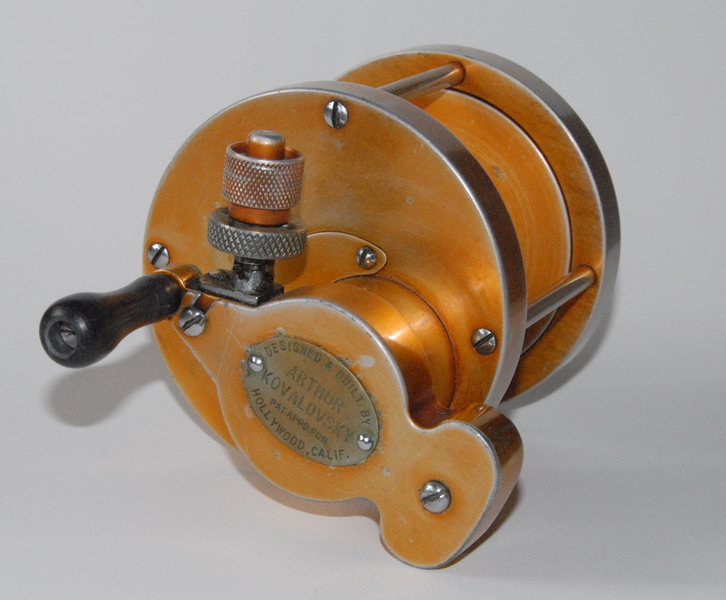

The next version of the Type I reel featured a round stamped in logo, as opposed to the oval tag, that still advertised Patent Applied For. The drag housing was modified to slide open for easy maintenance and repair. The angler would push a button on the back of the drag housing near the knob and the cover would pivot to reveal the drag mechanism. Here are two fine examples of the Micarta version of the Type I reel that illustrate the changes -

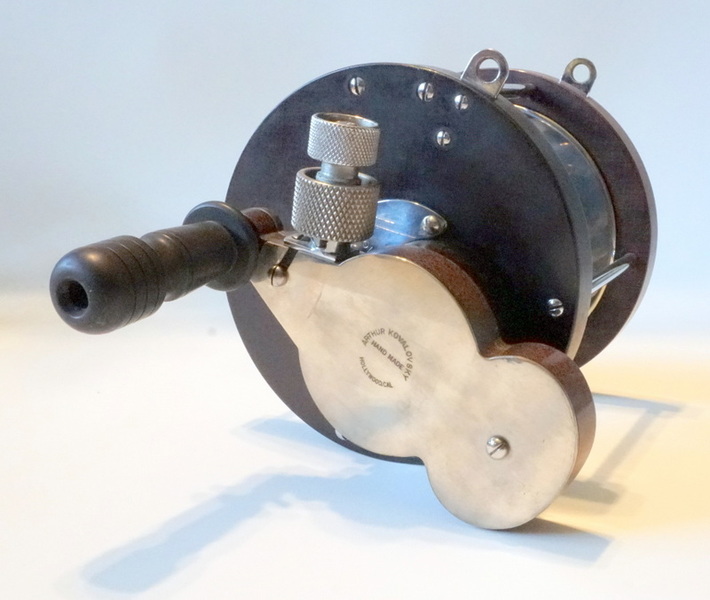


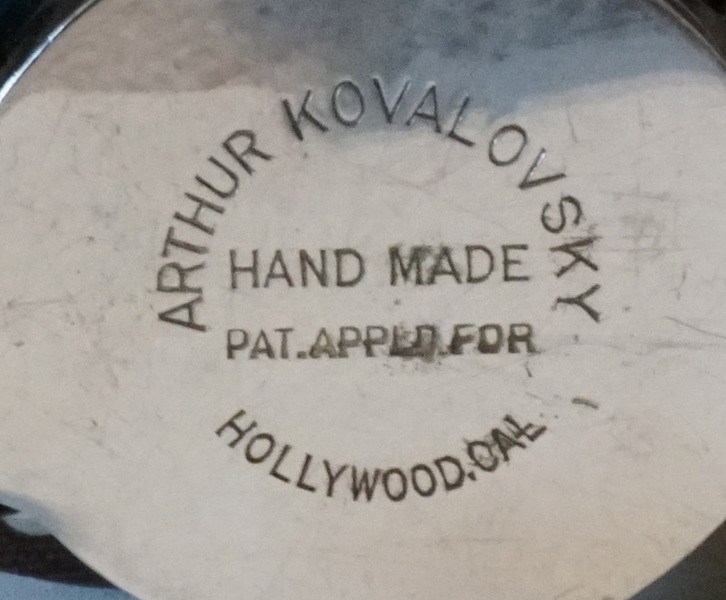
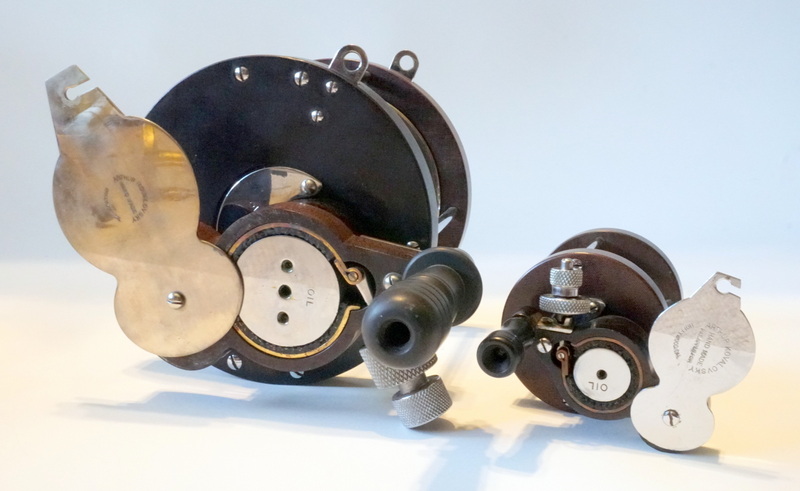
The final version of the early Type I reel with the guitar shaped drag housing, like its predecessor, had a round stamped logo with the only the difference being the newly granted patent, number 1,958,919, replacing the Patent Applied For in the center of the logo. Here are two nice chrome over brass examples of this version of the Type I reel. The large 16/0 reel was Zane Grey's personal reel and was featured with him on the cover of his book, An American Angler in Australia. There was no color photography back in the day so the hand tinted photos of this reel often depicted it as a gold Duraluminum reel, however, when you look closely at the structure of the reel you see that it is clearly a chrome over brass Type I reel -
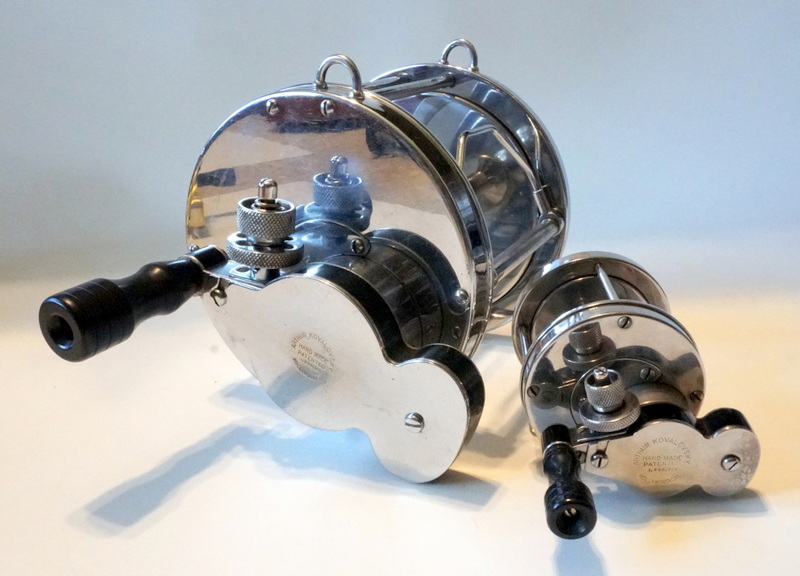

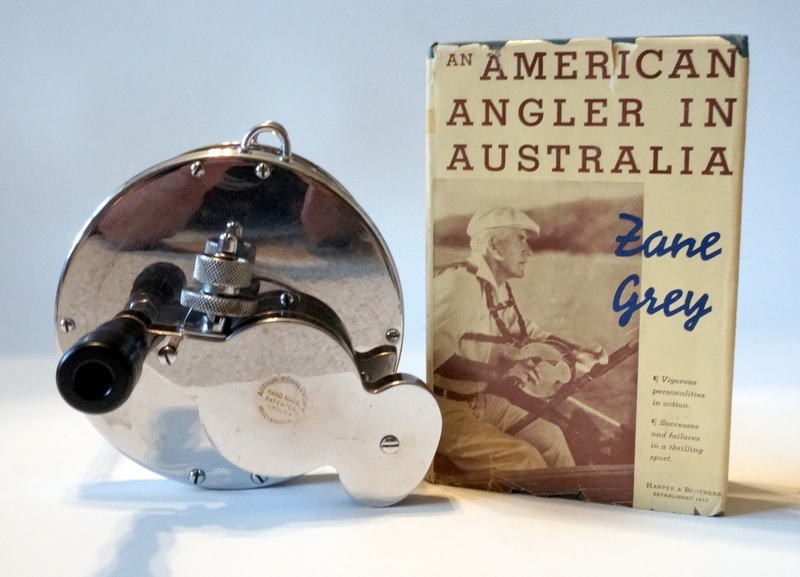
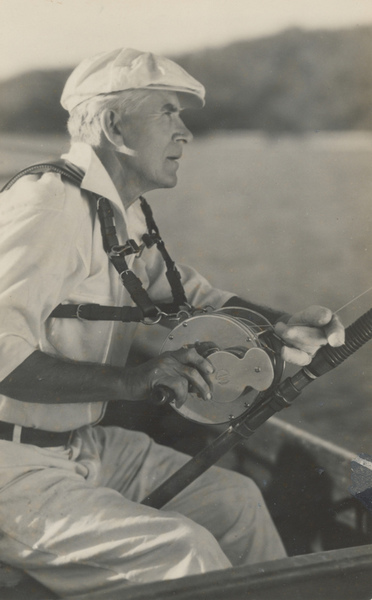

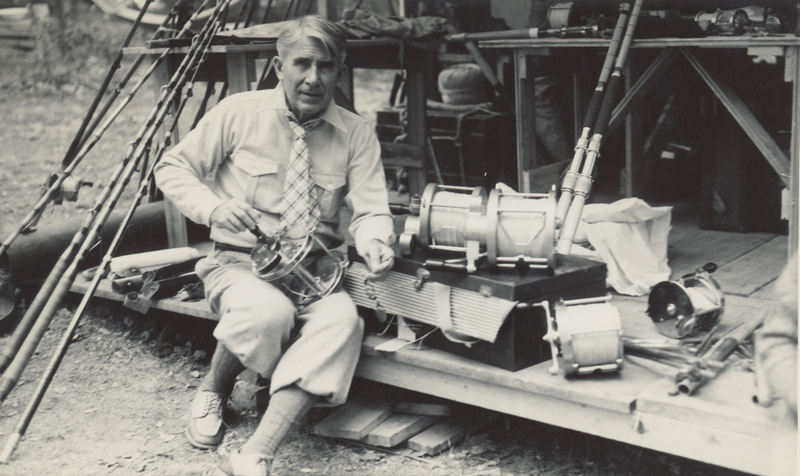
Type I - 2/0 - Chrome over Brass reel -
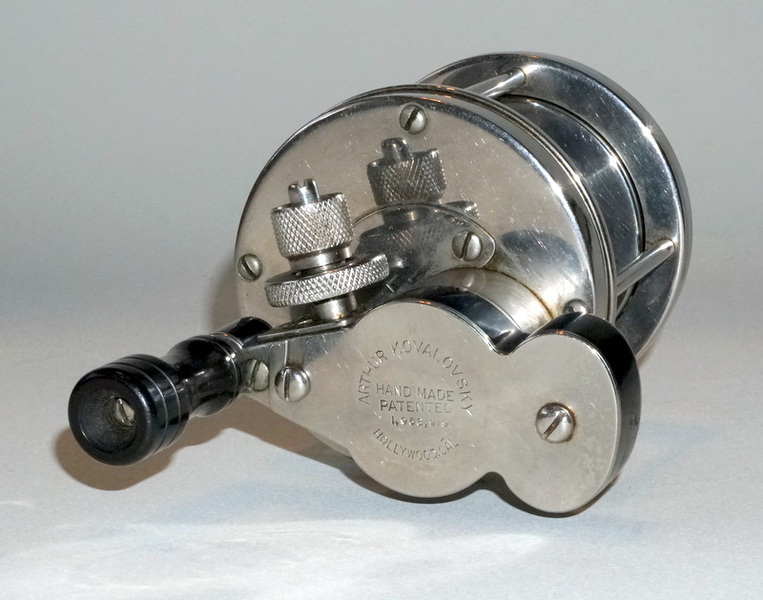

Below is an additional photo that represents the final version of the Type I Standard Model reel with the guitar shaped drag housing. This reel is made of Micarta in the 16/0 size and it includes the 1934 patent number in the center of the round stamped on logo.
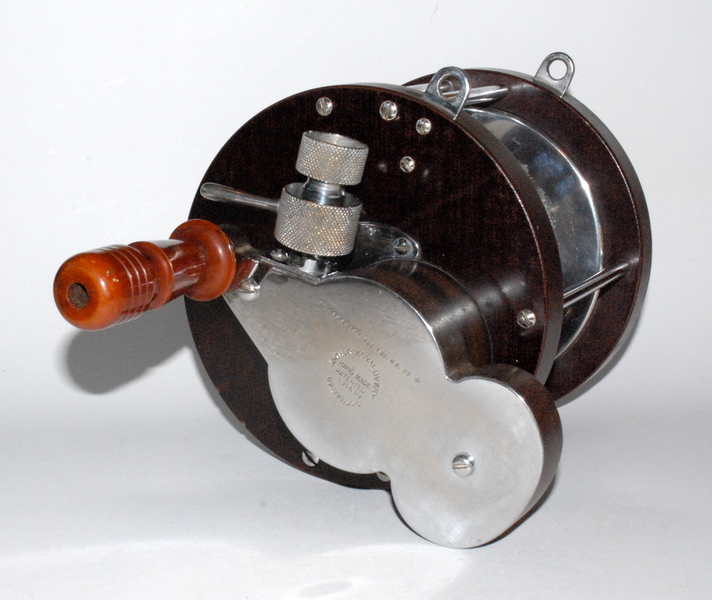
The Type I reel came in many sizes including 2/0, 3/0, 4/0, 6/0, 9/0/ 10/0, 12/0, 14/0,16/0 and 18/0. The reels have been found in unfinished brass, Duraluminum, gold anodized aluminum, Micarta, and chrome over brass. There may be a stainless steel reel out there somewhere, has anyone seen one?
Pictured below is a Kovalvosky fold out brochure circa 1934 advertising the early Type I Standard Model Reel with the guitar shaped drag housing. The reel in the catalog appears to be a 16/0 gold anodized Duraluminum version of the reel. It was during this time that Zane Grey started endorsing Kovalovsky's reels.
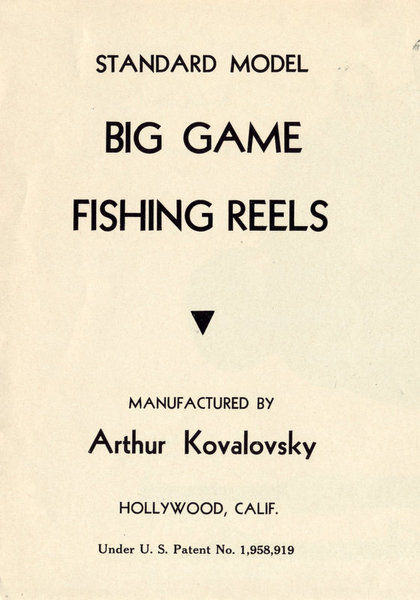
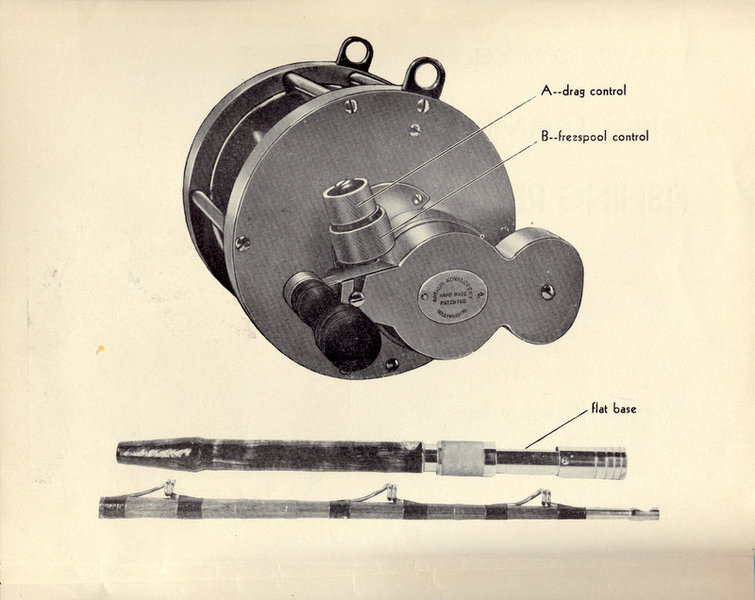
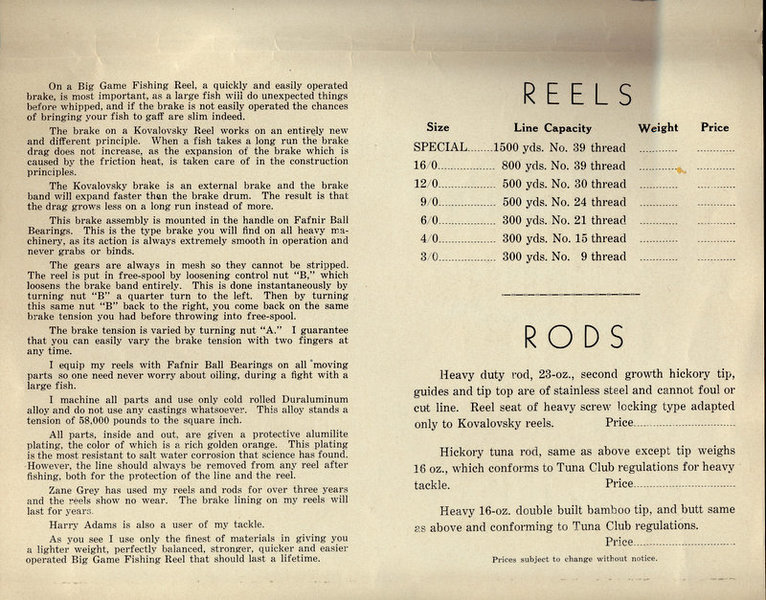
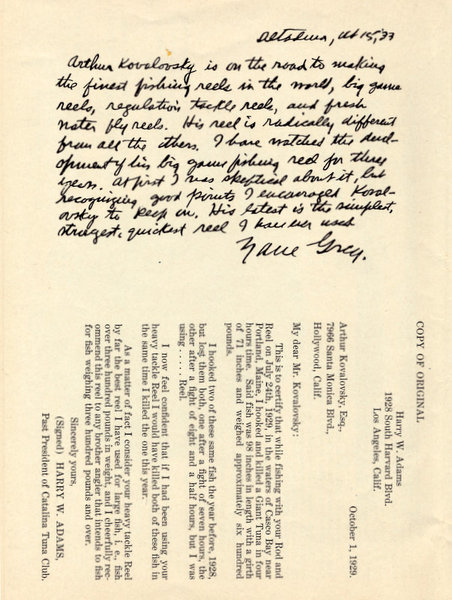
This one sheet Kovalovsky advertisement also prominently featured the Zane Grey endorsement. The original Zane Grey hand written endorsement is shown below the advertisement.
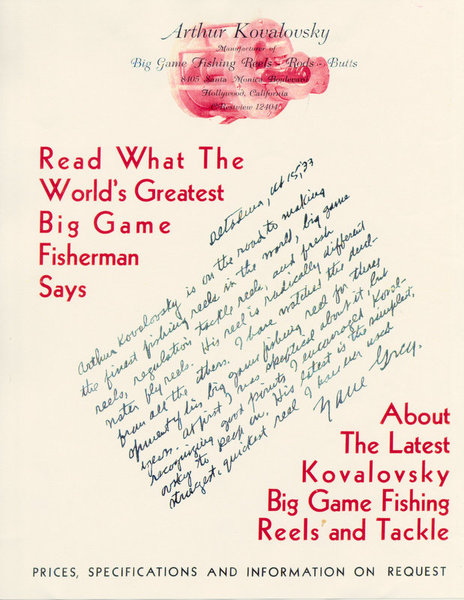
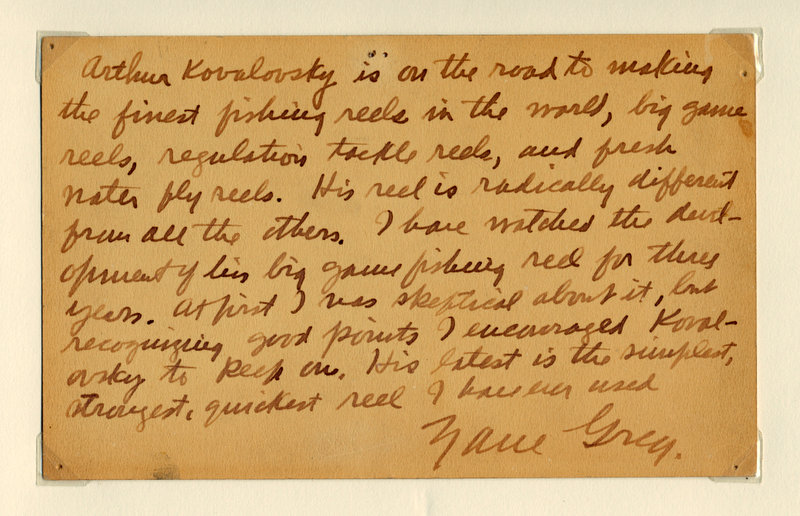
For one year the prestigious New York sporting goods store Abercrombie & Fitch sold the Kovalovsky Type I Standard Model reel alongside the Hardy Bros. "Zane Grey" and Edward vom Hofe "Commander Ross" big game reels. Here is the advertisement from that 1934 catalog.

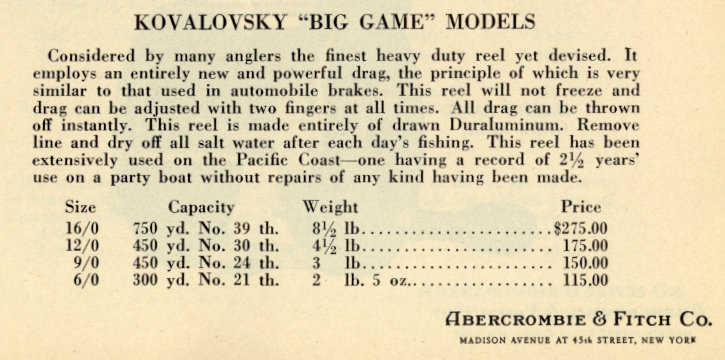
The Type I reel came with a red hang tag that stated its guarantee as well as an endorsement on its front side. The back of the the tag told a bit about the Micarta version of the reel's construction and how to operate and maintain the reel.
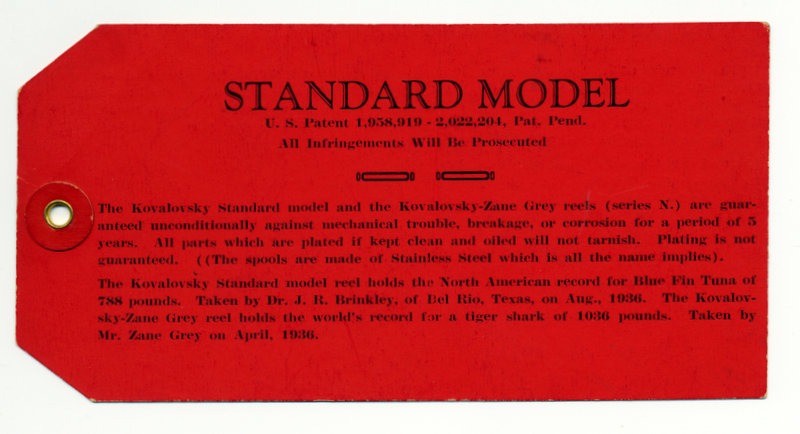
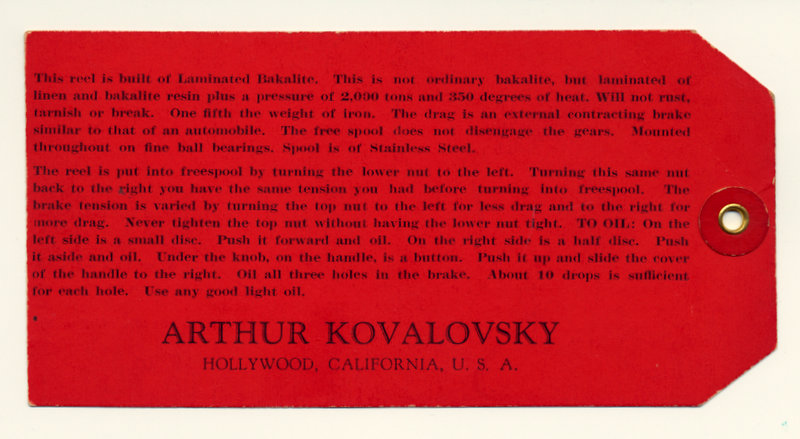
The reel also came with a Return Tag to insure the guarantee to the registered owner. The tag pictured below was for a reel purchased by Errol Flynn whose signature adorns the back of the card, a photo of Flynn with his 12/0 Micarta Arthur Kovalovsky Standard Model reel is shown below his return card.


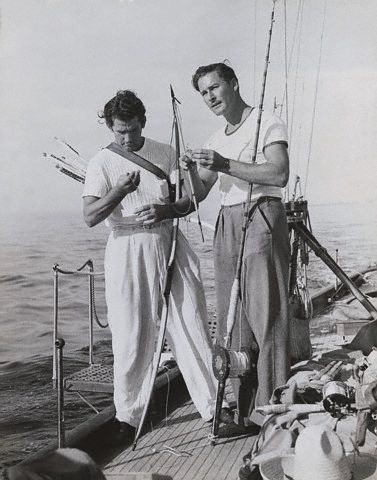
An advertisement from the September 7, 1930 Los Angeles Times announcing the opening of Arthur Kovalovsky's newly opened "Fishing Reel Plant".
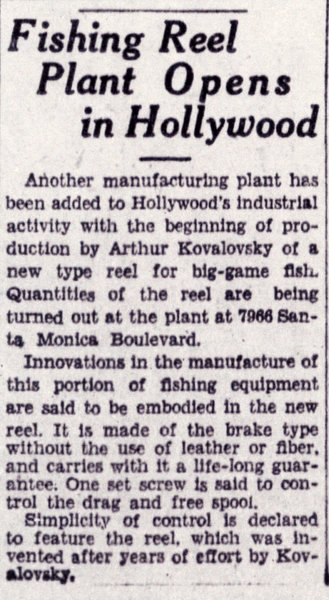
The place where it all happened, Arthur Kovalovsky's machine shop in Hollywood California.

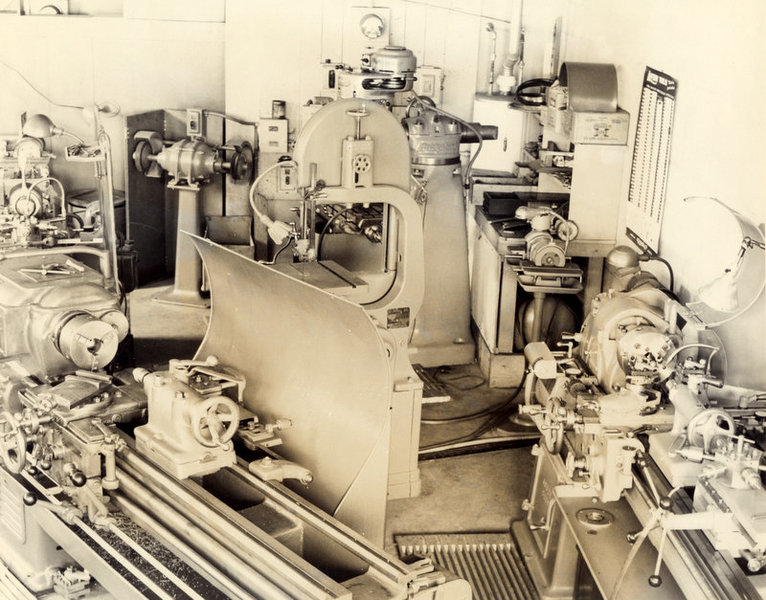
The anomalies .... there are always a couple of reels just that just don't fit into the puzzle and below I have pictured two examples of just such reels. The first reel has an unusual lever drag mounted on to on the guitar shaped drag housing where the drag stack would normally be located. I purchased this large 16/0 Type I reel as a field find many years ago and have since sold it. My personal opinion is that, like the handle knob, the lever drag was an extremely well made aftermarket addition. The knob originally belonged on a Fin-Nor reel and I believe that Fin-Nor’s Fred Grieten may have modified the drag as well.
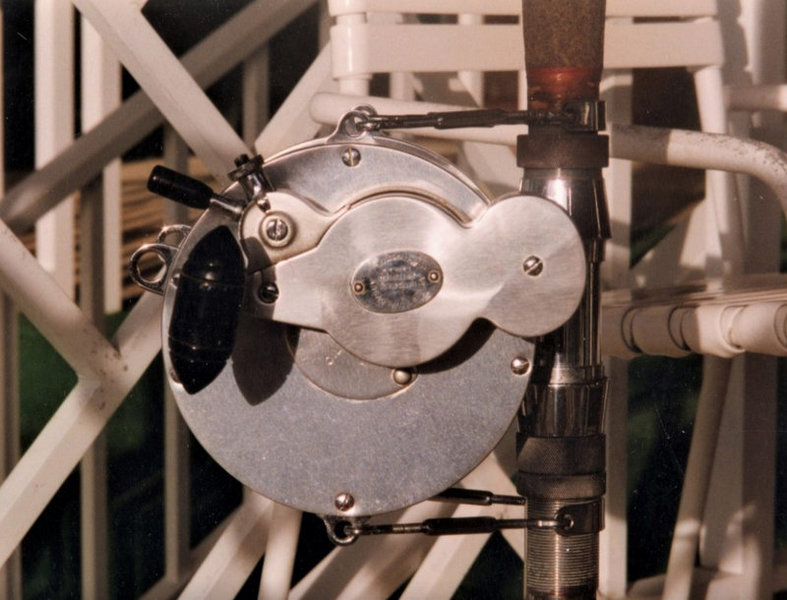
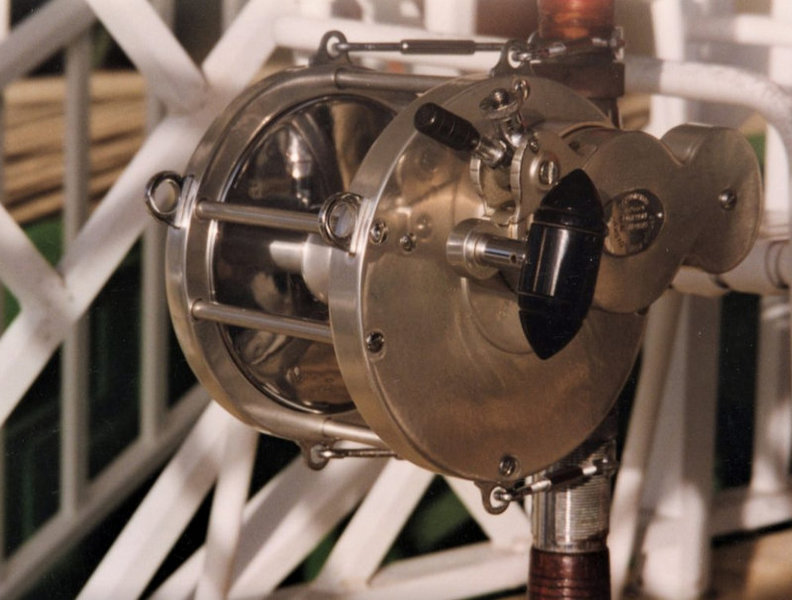
The second anomaly is a real "Frankenreel". I am almost convinced that Arthur Kovalovsky built this reel just to mess with the heads of people odd enough to collect his reels at some time in the distant future, long after he quit making his reels. He was a genius of a reel maker so perhaps he had a vision of the future and a good sense of humor as well. I have made the comments about this peculiar reel in the photos themselves. The reel combines many early aspects of the earliest reels like the first model round name tag and the lever activated click, however, it also has features of the later model reels such as the sliding drag housing cover that came along many years later. This reel is open for discussion, what is you opinion of this quandary of a reel?

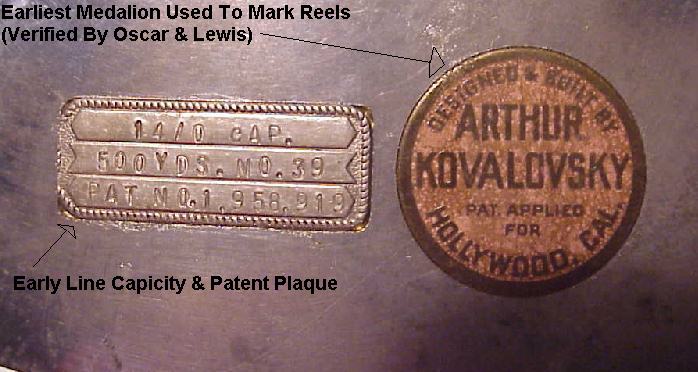

The Type I Standard Model’s guitar shaped drag housing eventually evolved into a round housing ending the period of the classic Kovalovsky Standard Model Type I big game reel.
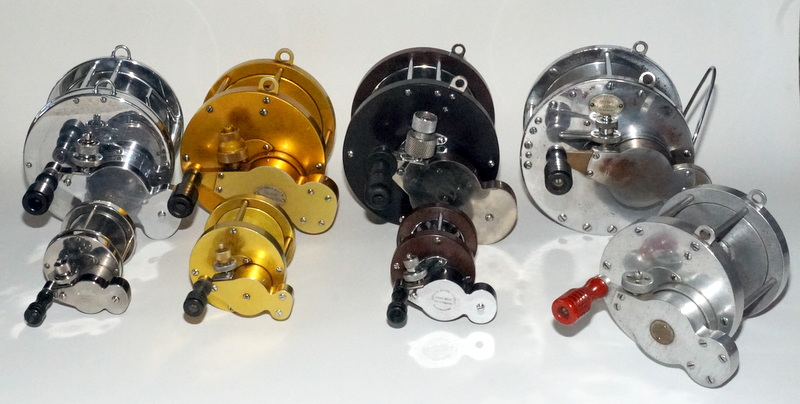
Kovalovsky was always experimenting with different ideas on his early Type I Standard model reels and there are some very interesting examples of them in the hands of collectors that are not featured in this display. Hopefully in the coming years I can add to my collection and share the new finds with all of you ORCAns.
Thank you for taking the time to stop in and having a look!

